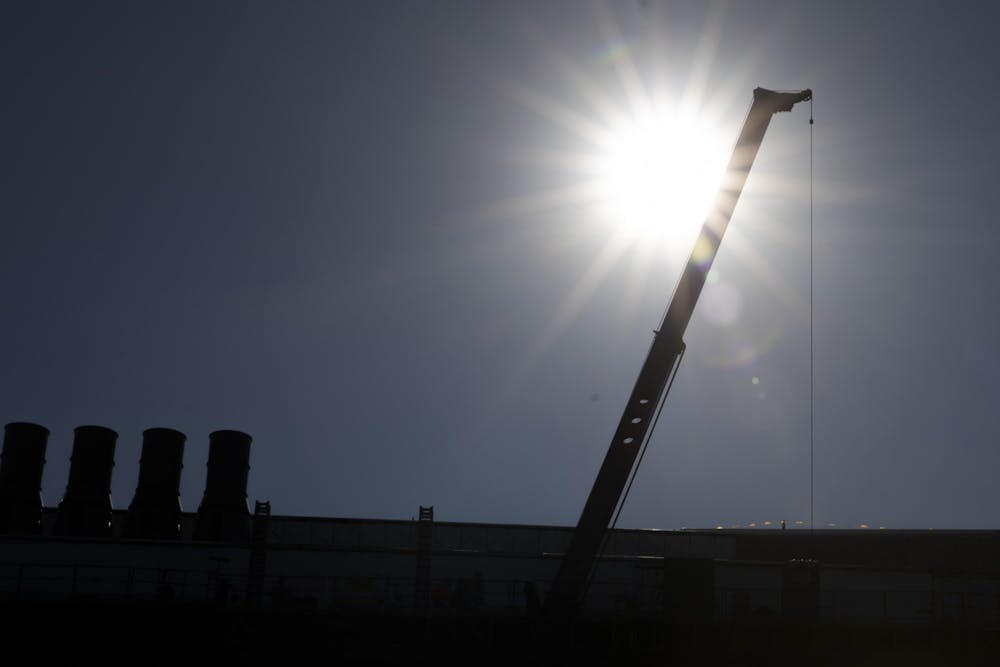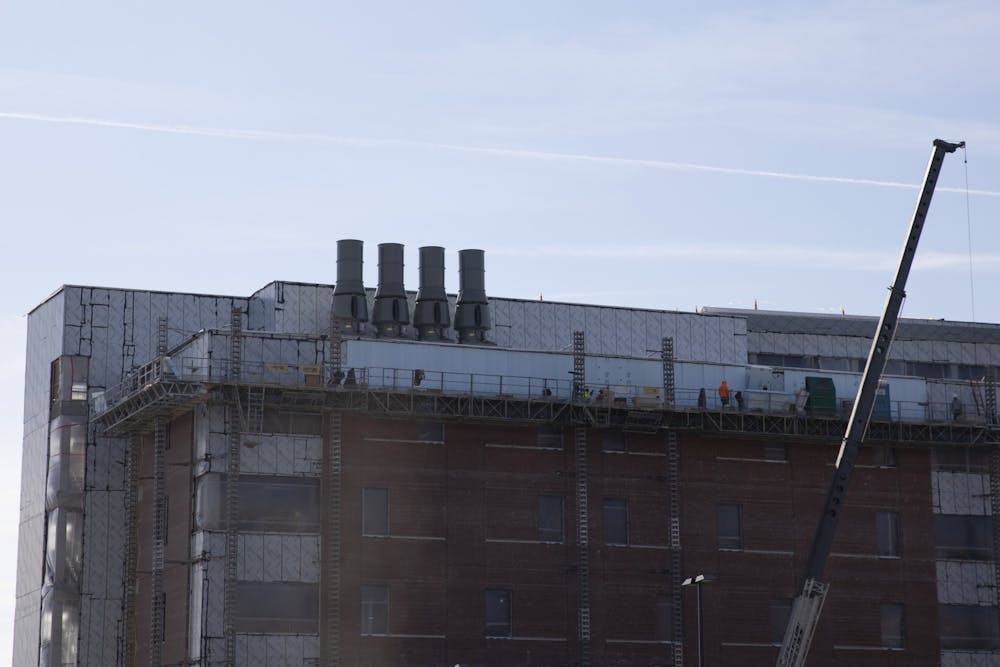While renovations are now underway at Ball State University’s Cooper Science Building, there are years of planning and preparation behind it. Jim Lowe, associate vice president for facilities, planning and management at Ball State, said the conversation about Cooper Science started in 2014.
“Those discussions continued until which time we made a decision, at the university, to approach the needs of Cooper through three phases of work,” Lowe said. “Phase One was to build a new building — we built the Health Professions Building.”
Lowe said as plans for the Health Professions Building were made and construction began, the College of Health was formed, “so the timing was perfect.”
Several departments made themselves at home in the Health Professions Building, like nursing, social work, athletic training, counseling psychology, speech pathology, and audiology — making more room in Cooper Science for remaining departments to shift around construction.
“We determined that the approach for Phase Two was to build another new building — the Foundational Sciences Building, [where] we would move chemistry and biology into,” Lowe said.
As for Phase Three, Lowe said it was “finally” time to turn attention to the Cooper Science Building. According to Kevin Smith, associate dean in the College of Sciences and Humanities, after the biology and chemistry departments moved out, other departments were able to move to the east end of Cooper Science.
“Other departments that were in the west end of Cooper, specifically geography and physics, geography and meteorology, and then astronomy, moved their offices to the east end,” Smith said. “So, that enabled the work to begin to basically rebuild the western half of Cooper.”

The sun shines behind a crane on the top of the new Foundational Sciences building on the south end of campus Nov. 18, 2020, at Ball State. The new building is planned to be a replacement of the original Cooper Science Complex built in the late 1960s. Jacob Musselman, DN
Smith said the area immediately to the east of the planetarium is under significant restructuring, getting torn down to the base and rebuilt.
“What will happen is that space will be remodeled and then over the course of next summer, and this will be some complicated maneuvering, but you have, in that space, geography and meteorology, [and] physics and astronomy,” Smith said.
According to Smith, the Environment, Geology, and Natural Resources Department will be one of the units moving into Cooper once it is refurbished. This department, as it stands, is scattered all across campus.
“You have natural resources faculty in that department, who deal with soil quality, and soil science. You have geology faculty, who also deal with minerals, and soils,” Smith said. “So [the reconstruction of the Cooper Science Building is] enabling them and their students to be in the same area, in the same research area, with modern new facilities.”
In addition to the Environment, Geology, and Natural Resources Department finding its home, according to Smith, the Applied Anthropology Lab has as well — consisting of the Archaeology unit and the Department of Anthropology. Lowe said, once all departments housed under the College of Sciences and Humanities move in, construction of the east end will begin.
Lowe said that he has a lot of gratitude for the Indiana General Assembly for funding $59.9 million into the Cooper Science Building. He said the grant allows the renovation of Cooper Science to contain both sustainable and collaborative work spaces and labs.
“We're creating a digital lab space on the east end of the building, a community meeting room on the south side of the building, reestablishing the observatory — making the building a lot more sustainable,” Lowe said. “The building will be connected to the geothermal systems thereby starting to save even more money or to generate even more savings.”
Our goal is to continue to create spaces that are flexible learning spaces that are usable by and collaborative for all departments that are in that particular building.”
The west end of Cooper Science is projected to be done by Spring 2023, and construction for the east end will take effect immediately — expected to be completed by Spring 2024.
Contact Kamryn Tomlinson with comments via email at 18tomlk@gmail.com or on Twitter @kamrynwrites.





